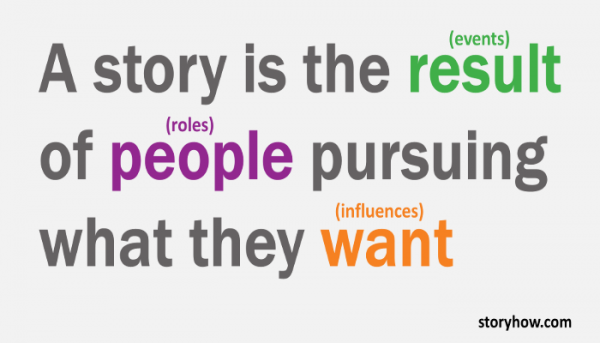
While stories are an effective way to deliver a message, they’re frequently overlooked when creating business strategies. So, let’s walk through an exercise to see how the StoryHow™ Method can support a common B2B situation: the long sales cycle.
FADE IN:
Our scene opens with ACME Cloud, a SaaS company which has invested six months of pre-sales effort into a $10 million deal. Its prospect, PowerWidget, Inc., has just completed a two-month product evaluation and it’s now time for ACME to wrap-up the deal with a day-long presentation at its spiffy new Executive Briefing Center.
Stories consist of three elements: roles, events, and influences. Therefore, if we use them to describe the upcoming executive briefing meeting, we have:
Events:
- A presentation-filled day at ACME’s corporate headquarters
Roles:
PowerWidget will bring a team consisting of:
- VP Operations
- Department Manager
- End users
- IT Support Specialist
ACME Cloud will parade a steady stream of presenters:
- CEO
- VP Sales
- Account manager
- Corporate Marketing
- Product Marketing Manager
- Pre-sales Engineers
- Customer Support Manager
Influences:
PowerWidget:
- The SVP Operations wants the best financial terms
- The Department Manager wants a solution that is supported by the end users
- The end users want a solution that makes their jobs easier, not harder
- IT cares about integration with their present environment and access to timely support if something goes wrong
ACME Cloud:
- The CEO wants to please shareholders and the board of directors
- The VP Sales wants a strategic win to leverage for a bigger prospect
- The Account Manager wants account control
- The Pre-sales Engineers want the right technical solution
- Corporate Marketing wants all messages to be compliant with the corporate brand
- Product Marketing wants to position its product
- Customer support is measured as a cost center, therefore, the manager is incented to find customers that require minimal support.
A story is the result of people pursuing what they want. Business stories (sales, support, negotiation, marketing, human resources) are no different. By breaking this common B2B sales situation into the StoryHow™ elements, it’s easy to identify potential conflicts fueled by a dozen characters with disparate motivations.
So, how does ACME deal with these competing motivations? It focuses on the ones that affect the sale.
- PowerWidget wants a solution that works from both a technical and financial perspective, is supported by the end users, and can be fixed quickly if something goes wrong.
- ACME wants to sell its solution to them
Any message that deviates from these wants must be eliminated from the executive presentation. Period. In storytelling, we call this editing. In business, we call it strategy. ACME must vet each idea, word, sentence, and presentation slide to ensure alignment with PowerWidget’s needs. Failure to focus on the customer’s wants will dilute the message, weaken the strategy, and delay the purchase order–or worse–kill it.
Pruning an executive briefing presentation requires difficult conversations. Does the CEO’s canned-pitch support any of PowerWidget’s needs to make a decision? Will brand messages advance the sale or just add unnecessary filler to an already long meeting? Does PowerWidget care how much market share ACME has? The answers may be yes or no, but is ACME asking the questions at all?
Give it a try. Use story structure to form your next business strategy.
- Identify the StoryHow™ elements (roles, events and influences) of your business situation.
- Eliminate any messages that don’t align with customer motivations.
- Weave the remaining customer-relevant messages into a coherent presentation arc.
I can’t predict the outcome, but I promise that your audience will appreciate the effort.